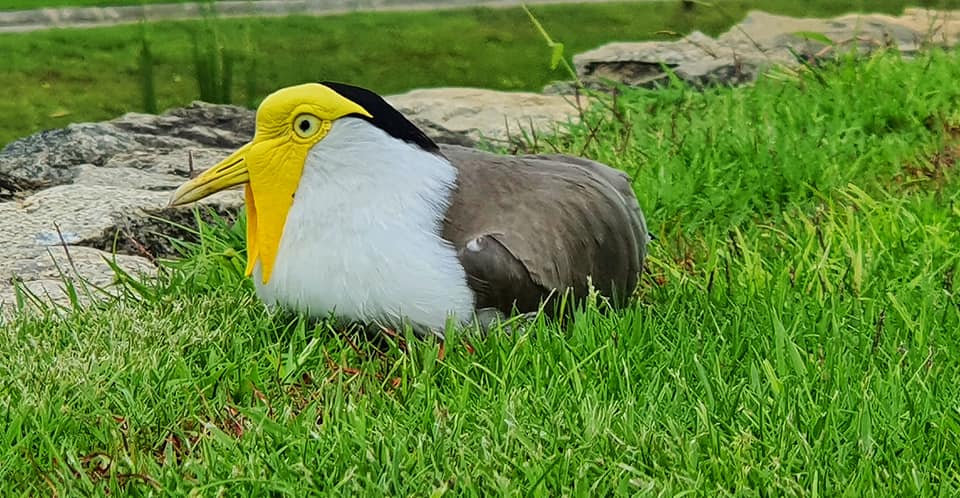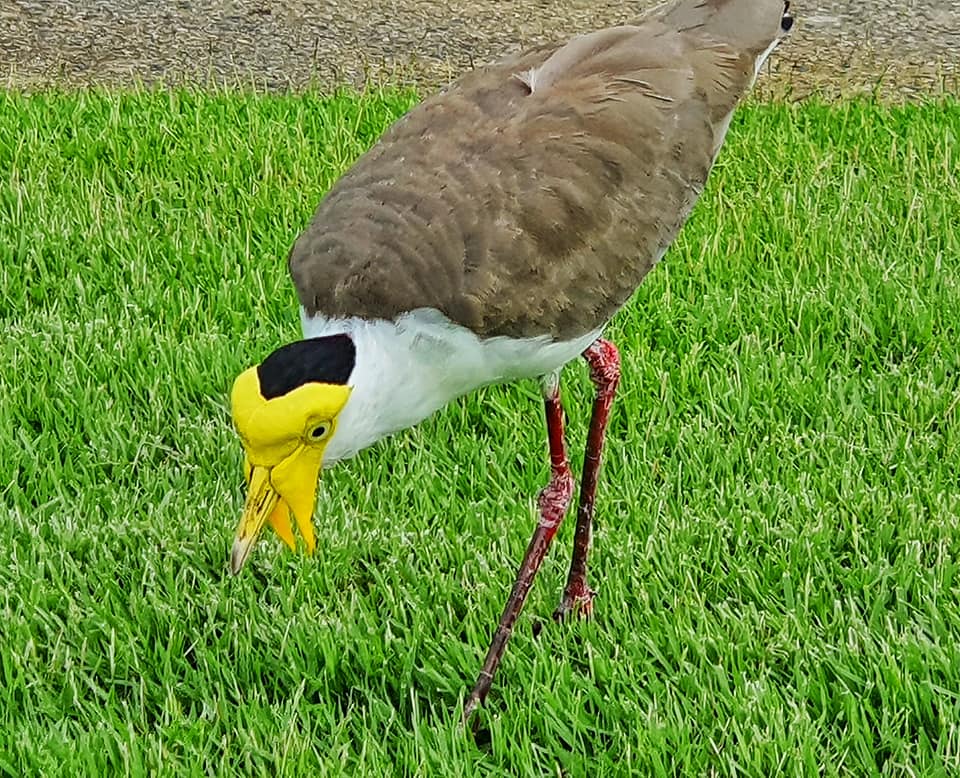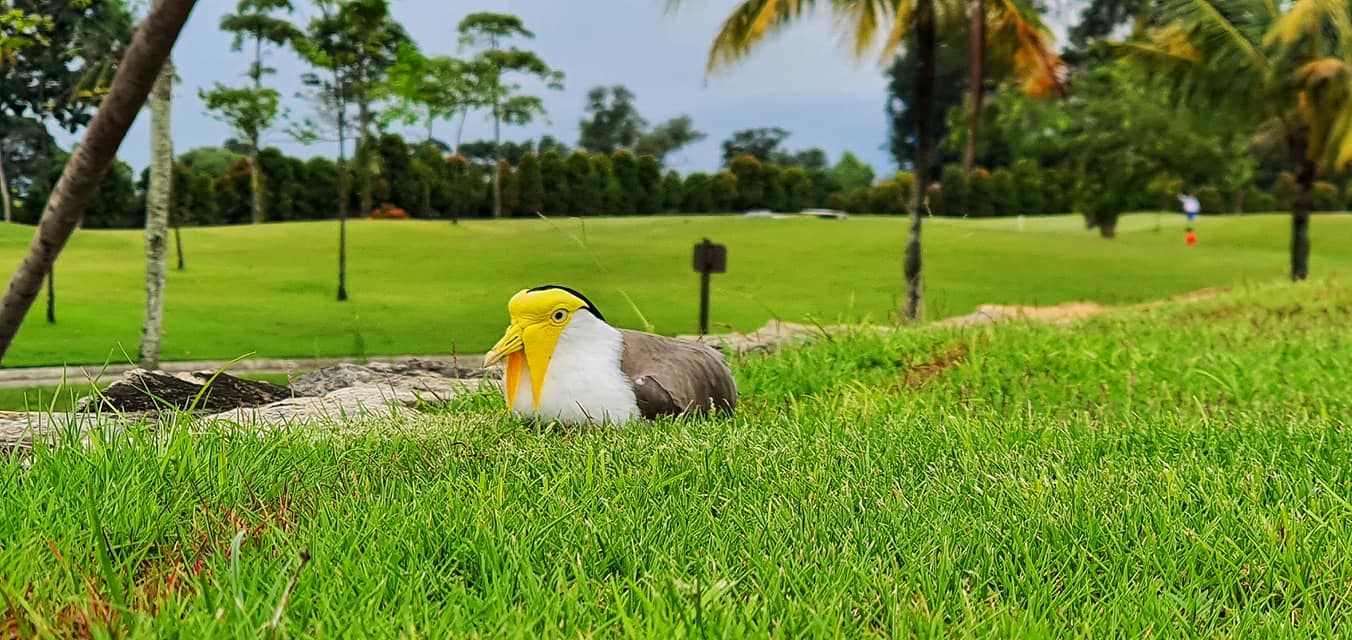Singapore—A netizen saw and photographed an unusual-looking bird earlier this week at a golf course at Changi, which one commenter promptly christened as “durian-faced.”
Facebook user Eddie Chung posted photos of the bird on the Nature Society (Singapore) page on Nov 10 (Tuesday), asking for help with identifying the bird, which turned out to be a masked lapwing.

All photos taken by Eddie Chung and posted on the Nature Society (Singapore) page.
Since masked lapwings have bright yellow faces similar to the flesh of durian fruit, commenters started calling the feathered creature a “durian-face” bird, although one netizen laughingly referred to it as a “cheese face bird.”
Another joked, “Who’s pan flipped an omelette and landed on this poor bird..?!”


Other members of Nature Society Singapore provided helpful information about the masked lapwing. They said that the bird had been an introduced species native to Australia, New Zealand, and Papua New Guinea, but was being bred in Singapore. A number of them can be seen at Rower’s Bay Park along Seletar Club Road.
There are also some at the river safari, another said.
An Australian netizen urged others to “be very careful” especially in this season because they lay their eggs and raise their chicks from November through April.
“These fellas used to swoop me in Sydney when coming to (sic) close,” he wrote.


In a comment, Mr Chung wrote that he believes the birds have been here for a while but that he, like most golfers, were too focused on their game to notice.
“Today my game sucks so I rather photograph some birds,” he added.


In 2006, the Bird Ecology Study Group wrote that an Australian lapwing had apparently escaped from the zoo and had become a “free-range” animal that was often seen in and around the zoo and the Central Catchment Reserve.
Six years later, the population of masked lapwings had grown.
“I spotted a group of 15-18 in a flock along the stretch of Sungei Bedok. I see them regularly now in groups of 2s, 4s, 10s and flying singly around that vicinity. I have also taken a number of photographs when they are feeding on the ground or in flight. I am excited to see them establishing a small population here away from their native AU/NZ homes. I am glad also to see juveniles flying among the flocks,” the Bird Ecology Study Group quoted a Sim Kian Peng as saying. -/TISG
Read also: “Insta-worthy” macaque touring Marina Bay delights Singaporeans
Macaque pickpockets MacRitchie Reservoir visitor’s mobile phone before dropping it in the water

